With more mobile subscriptions than people on the planet, staying connected has never been more important! Whether you’re managing global teams or staying in touch with loved ones, the quality of your calls matters.
VoIP (Voice over Internet Protocol) and VoLTE (Voice over Long-Term Evolution) are two major developments in the telecommunications industry. While both offer excellent call quality, faster connections, and cost savings, many are still unsure about their key differences in your communication needs, which one should you pick?
In this blog, we’ll break down the difference between VoIP and VoLTE, explain how each works, and help you decide which is the best fit for your calls. Let’s dive in!
VoIP Vs. VoLTE: The Key Differences
The main objective of VoIP and VoLTE is to help with voice communication. Their performance, functionality, and underlying technology, however, are very different. Here is a thorough comparison to help you understand these differences:
| Aspects | VoIP | VoLTE |
|---|---|---|
| Network Dependence | Relies on 4G LTE and 5G networks for enhanced capacity. | |
| Voice Quality | Consistent HD voice quality with prioritized packets. | |
| Call Setup Time | Faster setup with reduced latency. | |
| Battery Life | More efficient with LTE optimization. | |
| Cost | Typically included in mobile plans, carrier charges may apply. | |
| Target Audience | Geared towards mobile users for personal and business communication. |
Detailed Breakdown of Key Differences
VoIP uses the internet for voice calls, while VoLTE prioritizes voice packets over 4G LTE networks, providing better call quality and reduced latency. Let’s take a closer look at their differences:
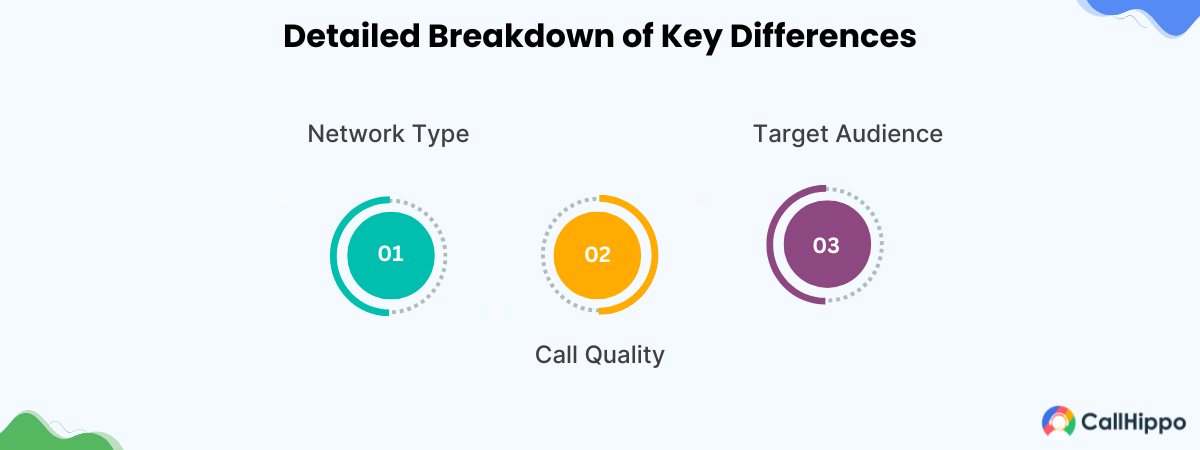
Network Type
VoIP is flexible yet dependent on internet quality as it uses Wi-Fi, 3G, 4G, or 5G internet connections. However, VoLTE only makes use of 4G LTE and 5G networks, providing reliable connectivity with capacity specifically allocated for voice conversations.
Call Quality
VoLTE prioritizes voice packets, guaranteeing high-definition call quality with few disruptions. By allocating resources to voice traffic, VoLTE maintains high-quality phone calls, whereas VoIP can experience call interruptions during network congestion.
Target Audience
VoIP, which offers features like conferencing and integrations, is targeted at companies trying to cut expenses and increase connection. VoLTE, which is built into modern mobile phones, offers reliable voice quality to both personal and business customers.
What is VoIP?
VoIP stands for Voice over Internet Protocol. By turning audio into digital data packets, this technology enables users to make voice calls over the Internet. In order to provide real-time communication, these packets traverse networks and are reassembled at the recipient’s end.
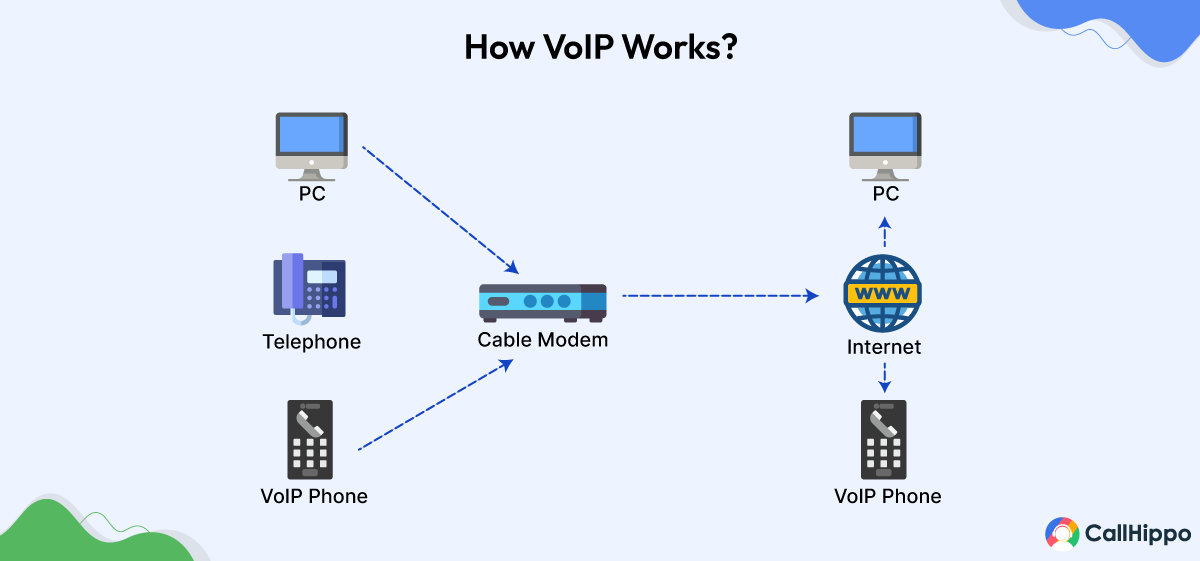
Demand for VoIP technology has significantly increased, especially among companies. A Grand View Research analysis predicts that the global VoIP market will grow at a CAGR of 12.9% from 2024 to 2030. Businesses looking for flexible, affordable communication solutions are the main drivers of this rapid growth.
Use Quality of Service (QoS) settings while configuring your network to guarantee effective VoIP communication. VoIP traffic receives priority, which lowers latency and call disruptions, especially in settings with heavy internet usage.
Key Characteristics of VoIP
VoIP delivers cost-effective voice communication over the Internet, offering flexibility, scalability, and integration with other systems like video calls. Here are some key characteristics of VoIP:
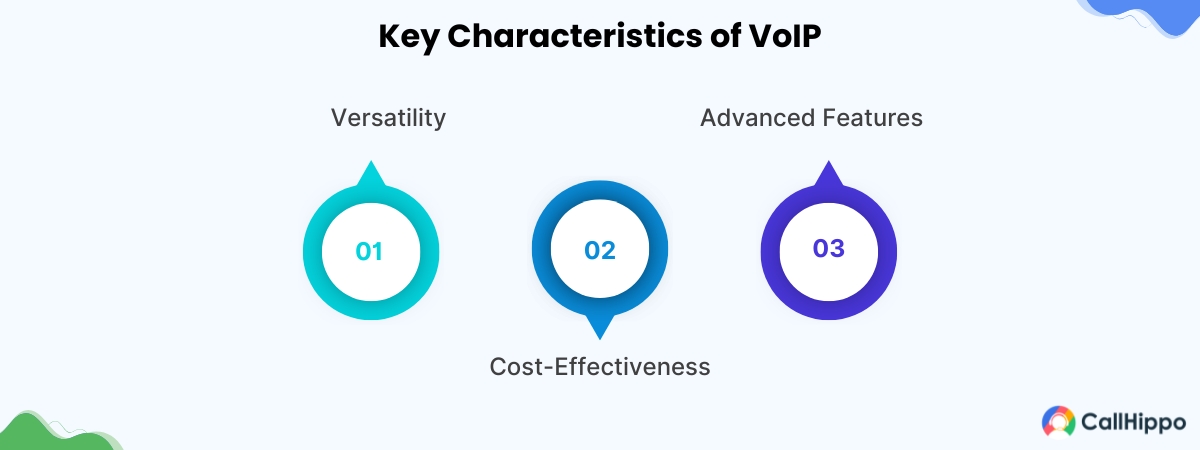
Versatility
A variety of devices, like cellphones, laptops, desktop computers, and VoIP-specific gear such as IP phones, may access VoIP. Businesses favor it because of its flexibility.
Cost-Effectiveness
Unlike traditional phone systems, VoIP does not require costly infrastructure. Thus, companies can save a lot of money on communication costs, especially when making international or long-distance calls.
Advanced Features
VoIP solutions frequently include capabilities like video conferencing, call forwarding, voicemail-to-email, and CRM connections to improve productivity and teamwork. However, because VoIP depends on consistent Internet access, poor network quality might result in interruptions, delays, or lost conversations.
VoIP in Action
Small businesses use VoIP to handle affordable international calls and integrate customer service via a unified platform.
- Sprintzeal Empowering Professional, a global e-learning platform, faced challenges with international calls, dropped connections, and a lack of centralized call management. They needed an efficient solution for onboarding clients, managing calls, and resolving queries faster.
- CallHippo’s virtual phone system provides features like sticky agents, call recording, and live monitoring, improving call management and customer experience. As a result, Sprintzeal saw a 27% increase in business growth, enhanced customer service, and improved team productivity.
What is VoLTE?
VoLTE, or Voice over Long Term Evolution, is a more modern technology that allows voice calls over 4G LTE networks. VoLTE calls mean they provide shorter call setup times and higher-quality HD audio, prioritizing voice packets over VoIP.
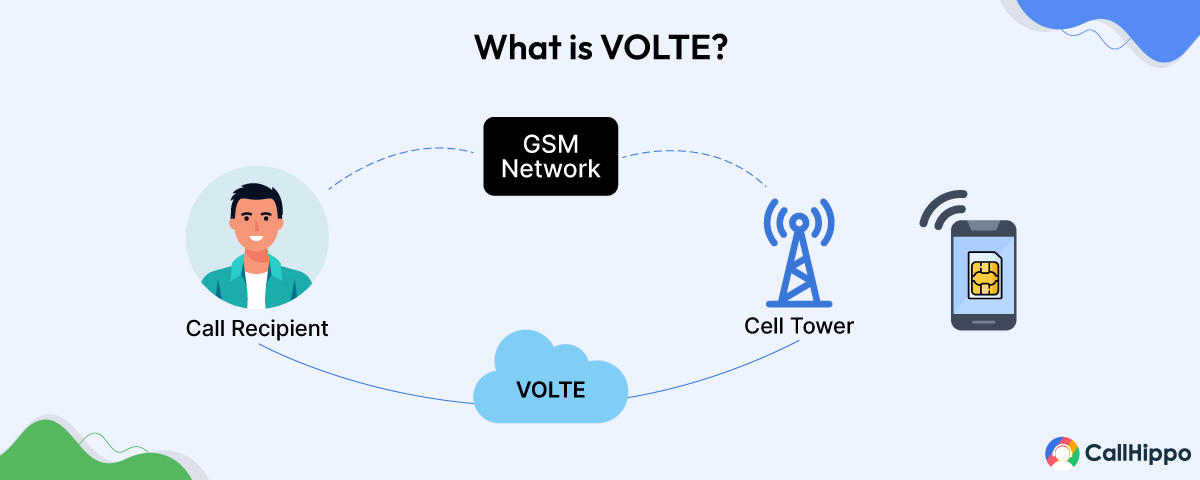
As VoLTE technology develops further, mobile network operators are using it more widely. The size of the global VoLTE market is projected to be USD 60.88 billion in 2025 and USD 382.37 billion by 2030, with a CAGR of 44.41% throughout this time frame. The growth of VoLTE owes to its call quality and faster connection times compared to traditional networks.
- Ensure that your carrier supports VoLTE and that it enables your device's settings. It guarantees that you get the most out of HD speech quality with faster call setup times.
Key Characteristics of VoLTE
VoLTE delivers HD voice calls over LTE networks, offering faster connections and improved reliability. It prioritizes voice traffic for superior call quality. The key characteristics include:
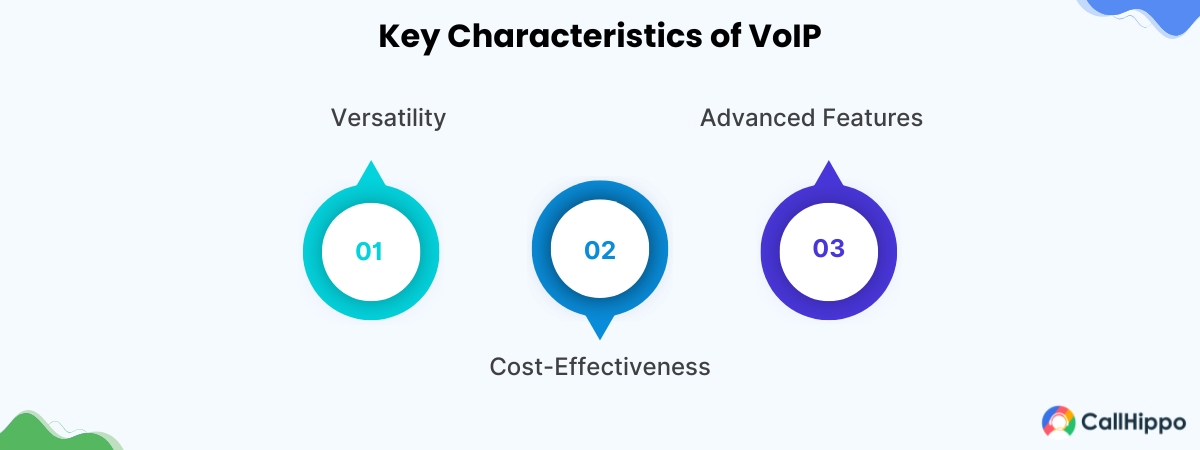
Better Call Quality
VoLTE makes HD audio possible, which frequently outperforms calls made on 3G or 4G. Wideband audio is encoded via LTE networks to do this, guaranteeing conversations that sound natural and undistorted.
Effective Resource Usage
VoLTE lowers latency call dropouts and guarantees an easy communication experience by prioritizing voice packets and optimizing bandwidth.
Battery Efficiency
As VoIP depends on continuous Internet access, VoLTE employs specialized LTE resources, which results in lower power consumption and longer smartphone battery life.
VoLTE in Action
Mobile professionals benefit from VoLTE, which allows them to make reliable, high-quality calls on the go and ensures smooth communication during peak hours.
Similarities Between VoIP and VoLTE
Despite their differences, VoIP and VoLTE share several similarities, making them both valuable communication tools:
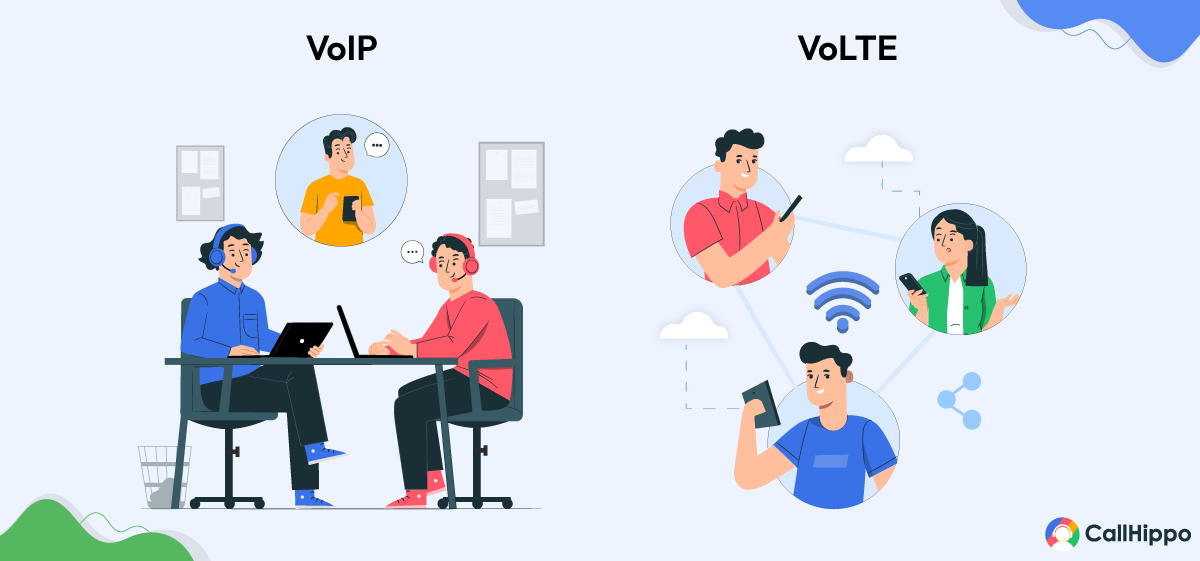
1. Digital Communication
Both technologies rely on the digital transmission of voice data, marking a shift from analog systems to more efficient and scalable communication methods.
2. Cost Savings
Both VoIP and VoLTE reduce dependency on traditional phone lines, resulting in significant cost savings for businesses and individuals.
3. Additional Features
Both systems support advanced functionalities, such as voicemail, call recording, and conferencing, which enhance user experience and productivity.
These shared benefits highlight why businesses and individuals are rapidly adopting both technologies.
- VoIP and VoLTE have an exciting future ahead of them, as both technologies thrive in the age of 5G. VoIP will continue to transform communication by improving company operations through affordability and smart features like AI-driven call management.
- VoLTE, which currently relies on 5G, will transform mobile communication by offering clear voice conversations, faster connectivity, and more reliability. Together, they provide businesses and consumers with modern, future-ready solutions globally, ushering in an era of high-quality interactions.
Conclusion
Your decision between VoIP and VoLTE should be based on your specific needs. VoIP is an excellent choice if you’re looking for a feature-rich and cost-effective service, while VoLTE is ideal for people who value mobility and call quality.
Both technologies reflect the transition to digital communication, which provides scalability, efficiency, and flexibility. Keeping up with the latest developments in telecommunications guarantees that you stay connected and competitive today.
Frequently Asked Questions
1. Is VoLTE better than VoIP?
VoLTE offers HD voice quality, faster call setup, and reliability on 4G/5G LTE networks, making it ideal for personal use. VoIP excels in cost efficiency, versatility, and feature-rich offerings, making it more suitable for businesses.
2. What is the preferred network type of VoIP?
VoIP typically operates over Wi-Fi, 3G, 4G, or 5G networks, depending on the availability and quality of the Internet connection. A stable and high-speed network ensures better call quality.
3. Does VoIP mean cell phone?
No, VoIP is a technology that allows voice communication over the Internet. While it can be used on smartphones, it is also compatible with other devices, such as computers and IP phones.
4. VoLTE vs WiFi calling: Which is better?
VoLTE is generally more reliable for mobile communication as it uses a dedicated 4G/5G LTE network. Wi-Fi calling depends on the quality of the Wi-Fi connection, which may vary.
5. How does VoLTE improve call quality compared to VoIP?
VoLTE prioritizes voice data packets, ensuring clearer, faster connections and better quality calls than VoIP, which may suffer from congestion and delayed packets.
6. Can you use VoLTE without a 4G plan?
No, VoLTE requires a 4G or higher network plan to work. It uses LTE technology to improve voice quality.
7. What devices support VoLTE for business communication?
Most modern smartphones, including models from Apple, Samsung, and Google, support VoLTE for business communication.
8. What is the difference between VoLTE and Wi-Fi calling?
VoLTE uses cellular networks (4G/LTE) for voice calls, while Wi-Fi calling routes calls through a Wi-Fi network when cellular coverage is weak or unavailable.

Subscribe to our newsletter & never miss our latest news and promotions.









